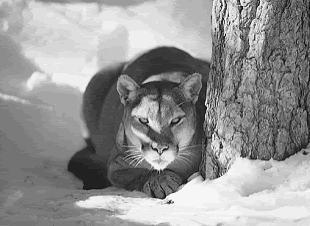
Photo courtesy of South Dakota Game, Fish, & Parks
It seems that I keep talking about animal attack accounts and updates. Some reporters have asked me if attack incidents are up. If you missed previous posts you can review the mountain lion attack in 2008 post now. The determination on the South Dakota cougar attack has been defined as “probable.”
The South Dakota Game, Fish & Parks Department is unlikely to change what it does. I read one account that said the investigation turned up animal fur/hair on the victim that was not identified as cougar fur and the lion dogs and investigators did not find lion signs. (Sorry, didn’t bookmark the commentary and haven’t turned up an original source.) Anyway, Ryan Hughes had to undergo a series of rabies shots.
People tend to panic when it comes to wildlife near their homes but there are laws protecting native wildlife and guidelines to follow that vary depending on the area you live. One of my neighbors was attempting to get Fish & Game to remove a “nusance” cougar.
However, the cougar has been here since I’ve lived here and often comes down onto the roads, recently the roof of a neighbor on the edge of the forest, and has not been hurting any animals or humans.
Animals have been here long before we were and simply because the animal signs are present do not mean it is a nuisance. BUT since he or she is here the locals need to take precautions with their pets and activities in the woods.
The fact that one of our major campgrounds is now closed (due to the 2007 wildfires) gives the animal more territory to traverse outside of human activity.
A couple of years ago USA Today reported that a study concluded that sport hunting did not impact mountain lion behavior. In the past, it has been suspected that it has.
Then yesterday, a dog was attacked by a mountain lion in Colorado. I’ll be preparing a report on hiking safety and pets in the mountains so stay tuned. Be sure to sign up for the newsletter so you don’t miss the announcement.



